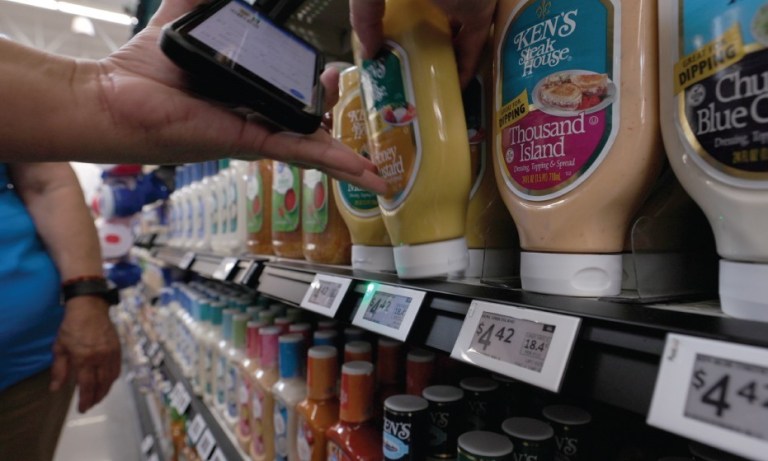Walmart and Amazon Race to Digitize the Physical Store

As Walmart and Amazon compete to stay at the forefront of retail’s omnichannel transformation, the two industry giants are integrating digital technologies into physical stores, aiming to provide the most convenient, connected shopping experience.
Walmart, for its part, is digitizing shelf tags to make brick-and-mortar operations more efficient, which in turn will translate to a more frictionless consumer journey within its four walls.
After conducting a trial at the Grapevine, Texas, location, the retailer announced plans to roll out digital shelf labels, created by VusionGroup, to 2,300 stores by 2026. The labels will replace traditional paper price tags on shelves, enabling employees to update prices using a mobile app and reducing the manual labor involved. With over 120,000 products per store and thousands of weekly price updates, Walmart can complete price changes in minutes instead of days.
“The transition to digital shelf labels is a game-changer for Walmart, our customers and our associates,” Daniela Boscan, the retailer’s food and consumable team lead in Hurst, Texas, stated in a company blog post, adding that the technology boosts “efficiency and customer satisfaction.”
Walmart also uses other Click-and-Mortar™ technologies, such as Scan & Go for Walmart+ members, in-store and curbside pickup for online orders, and digitally enabled payment capabilities such as buy now, pay later (BNPL).
Amazon, meanwhile, has been looking to connected technologies to provide omnichannel capabilities both in its own stores and through external retailers. The eCommerce giant has been focusing on using its smart shopping cart, the Amazon Dash Cart, at its Fresh grocery stores, while licensing its Just Walk Out computer vision checkout technology to other retailers.
“We’ve … heard from customers that while they enjoyed the benefit of skipping the checkout line with Just Walk Out, they also wanted the ability to easily find nearby products and deals, view their receipt as they shop, and know how much money they saved while shopping throughout the store,” Amazon spokesperson Jessica Martin said of the transition to Just Walk Out to Dash Carts at Fresh stores in a statement emailed to PYMNTS in April.
Additionally, Amazon has its Amazon One palm recognition technology that allows customers to enter and pay in stores with a scan of their palm. It is designed to be a quick, contactless way to authenticate identity and payments. Plus, the company also has a range of on-site pickup options for digital purchases.
These innovations come as many consumers seek technologies that combine the online and the physical. The PYMNTS Intelligence report “2024 Global Digital Shopping Index: U.S. Edition,” created in collaboration with Visa Acceptance Solutions, revealed that roughly 1 in 3 United States consumers are Click-and-Mortar™ shoppers, choosing experiences that work convenient digital features into the in-store shopping journey. Specifically, the study found that 19% of U.S. consumers prefer to shop in stores with the assistance of digital technologies, and 11% prefer to make purchases online for in-store pickup.
As Amazon and Walmart continue to innovate and integrate digital technologies into their physical stores, the competition between these industry giants is driving advancements in the omnichannel shopping experience, accelerating retail’s omnichannel transformation.
For all PYMNTS retail coverage, subscribe to the daily Retail Newsletter.